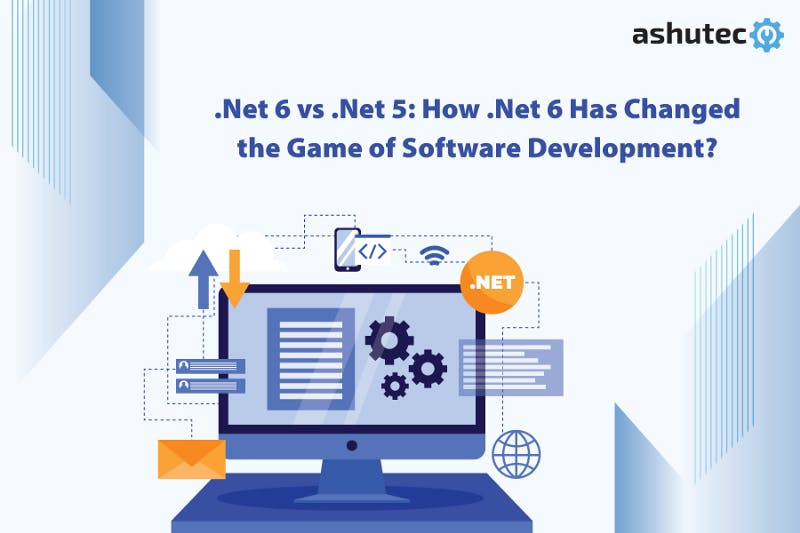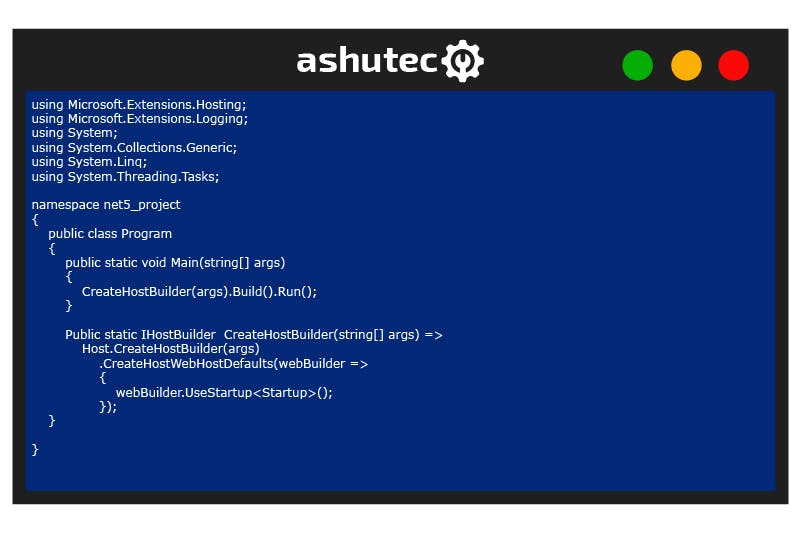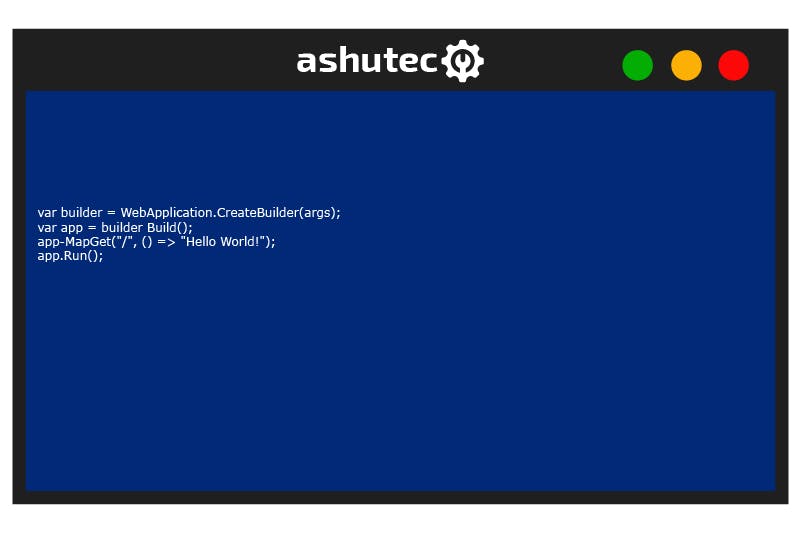Let’s Connect!
Work can be a fun when we know and understand each other well. Let's start conversation to new beginning
+91 63542 35108
To discuss what we can do for you Give us a Call
connect@ashutec.com
Tell us about your next project Write to us

In the past, I have briefly talked about the Dot Net 6 framework that was released last year in Nov by Microsoft during the .Net Conf 2021.
DotNet 6: Let’s Get to Know What the Fuss Is All About
As mentioned, the latest version of .net 6 unifies the other .net frameworks into a single .Net platform. The journey to the unification of platforms such as .Net Core, .Net Framework, and Xamarin began with .Net 5. And it was supposed to be complete with the release of the .Net 6.
Initially, Microsoft had planned to complete the unification when releasing .Net 5 back in 2020. However, due to the COVID situation, the unification process was delayed. But with .Net 6, it’s finally here. So, let’s compare .Net 6's performance with .Net 5 and how it changes the game of software development forever.
Microsoft and the.Net community created and maintained the open-source development platform known as .Net Core.
.Net Core when it is simply a subset of the .Net Framework, .Net Core has been developed with a focus on Web Development, Windows Phone Development, and Windows Store Apps Development, taking into account a variety of needs and goals.
If you have cross-platform, consider using .net core, Your application will probably run on Linux, macOS, and platforms like Windows. You may work on entire projects and be versatile in the Apple environment with the new code editor Visual Studio Code. If you use Linux, the same holds true.
.Net Core uses software that is composed of discrete, modular business services. As a result of the flexibility for each service to operate a different process and be deployed independently, scalability is increased.
The majority of the time, containers and microservices architecture are deployed together. The fact that.NET Core is lightweight and modular makes it a great fit for containers.
.NET Core offers command-line interface control that allows developers to work on interface-driven environments.
.NET Core lack third-party support. It does not support WCF services, if you want a WCF service then you have to use REST API with ASP.NET Core MVC.
Microsoft is continuously upgrading its technology and the same is reflected in the .Net 6 platforms. Here I am going to delve into the reasons for making a switch from .Net 5 to .Net 6.
Plans to combine.NET Core and.NET Framework 5 features have been in place since the release of.NET Framework 5. This has now been completed with .NET 6. The SDK, base libraries, and runtime are unified by .NET 6 across desktop, mobile, and other more recent technology areas like the Internet of Things (IoT) and cloud applications.
.NET 6 provides minimal APIs that lets you build lightweight services and lightweight services do not require a template or controller class. IEndpointConventionBuilder interface could be used for lightweight services.
Hot Reload is one of the most obvious new features in.NET 6. This functionality allows you to alter the user interface while your ASP.NET Core 6 application is running.
In the previous versions of .NET, when a new ASP.NET Core project is created, it is automatically saved in the program.cs file but in the latest version of .NET, the visual studio creates a default program.cs that has the code.
.NET 6 supports the HTTP Logging middleware, this feature could be used to log information about HTTP requests and responses. .NET 6 has some additional features for app development.
Code that is written in Program.cs is assumed to have been written in the main method when using the Top Level Statements feature. By doing this, we avoid needlessly adding too many Scopes and Namespaces to the application. The application can concentrate solely on processing the code.
In .NET 5

Now with the .NET 6, the Top Level Statements feature code is simplified.

This release of C# 10 includes a wide range of enhancements, but simplicity has been the primary focus. The global using directive, record structs, file scoped namespace, constant interpolated strings, lambda improvements, and null parameter verification are a few of the major enhancements in C# 10.
The primary reason to make a switch to the latest version of dot net is the long-term support. The .Net 6 will get 3 years of guaranteed support as Microsoft will keep releasing patches and fixes. While the same for the .Net 5 is half, meaning only 18 months of support that is to end on May 8, 2022.
Thus, it makes sense and is crucial for end-users as well to be on the latest company software. That said, it’s also necessary to get security and patch upgrades to keep the software safe and sound from any malicious threats and flaws.
Another reason to shift to .Net 6 is Microsoft’s single platform for developing all kinds of software and digital products. Developers can use it for web applications, desktop software, and even mobile app development. Thus, using the same framework, now you can develop a web app and even release a mobile app on the same C# codebase.
This will undoubtedly benefit the developer community in terms of developing software faster and maintaining them easier. Also, the performance of the .Net 6 has been one of the topmost talked about things. It’s said that .Net 6 is almost 40% faster than its predecessor. This interesting data regarding the .Net 6 would help it gain significant market share.
Load distribution in the latest version of the dot net framework has been phenomenally balanced. There have been many tests conducted by various companies that have shown a general trend for the working of different platforms rather than revealing the limit values at which the systems go unbalanced.
As per the data comparison and analysis DZone, it’s an interesting find that .Net 6’s load distribution patterns follow a smoother curve than the .Net 5. With the increase in the number of clients per second, the average response time in the plot maintains a sufficient distance, which is not seen in the .Net 5’s curve.
Since the latest version has a smoother curve, it also has fewer bursts in comparison to the .Net 5. Also, the curves don’t cross each other during the entire test as is the case with .Net 5. This is an indirect suggestion that the performance of .Net 6 has been tremendous and can handle such load distribution tests more efficiently than its predecessor.
.Net 6 is a result of over a year’s effort from Microsoft’s .Net team and community. The latest version packs many C# 10 and F# 6 which makes code simpler and better. Also, there is a significant gain in the performance.
.Net 6 is the first of its kind to have native support for Apple Silicon (Arm64) and has also been improved for Windows Arm64. The new dynamic Profile Guided Optimization (PGO) offered by the .Net 6 has deep optimization capabilities that are possible only at the runtime.
Here are a few more things that have become part of the .Net 6 releases:
The question “Is .Net 6 the fastest .Net yet?” is proven by tests conducted by Alex Yakunin.
The simple answer to this question is Yes. In fact, .Net 6 is almost 40% faster and speeds up than .Net 5. Through various tests, it has been proven that .Net is currently the fastest .Net released and available in the market.
Tests that include caching and tight loop get up to 30% speedup. Another test that adds Fusion cache to a regular web API gets about 15% speedup with .Net 6. And the typical HTTP pipeline test gets approximately 4.5% speedup.
From all the testing results, one thing that comes out is that PGO shines in .Net 6, and caching is definitely going to be more advantageous for .Net 6.
So, we proved that .Net 6 is the fastest .Net currently available in the market and performs well in comparison to its predecessor .Net 5. With such a level of speed and performance, .Net 6 is sure to change the game of software development. Also, this is the single unified platform to develop all kinds of software products, it becomes fast and easy for developers to build apps.

